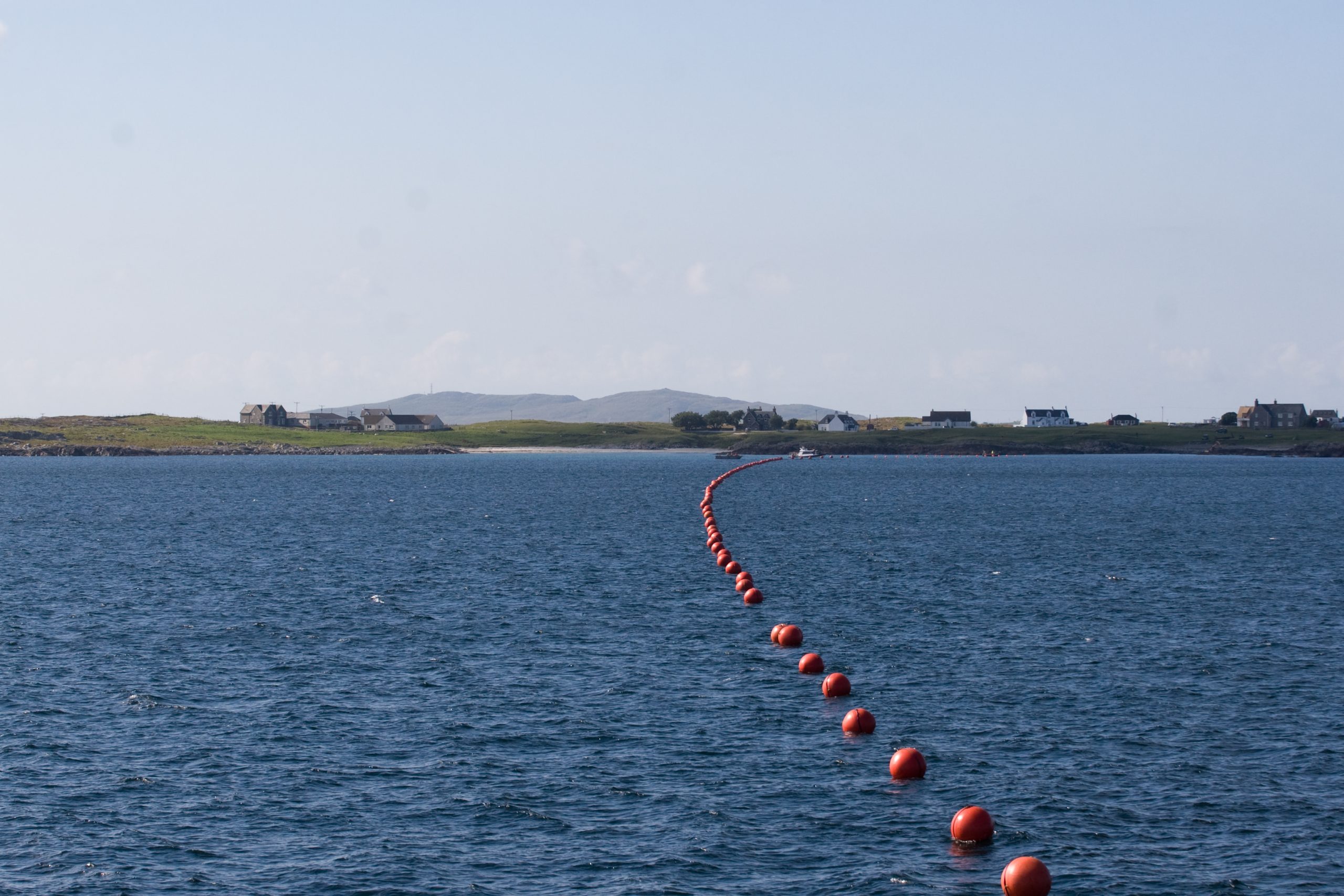News
Keeping connected: submarine communications cables and ocean life

News | Apr 2025
A new UNEP-WCMC report examines the potential pressures, impacts and opportunities of submarine telecommunications cables on marine biodiversity
Submarine telecommunications cables (hereafter called submarine cables) are essential to keeping the world connected. They carry almost all of the world’s intercontinental internet traffic and play a fundamental role in the global economy as well as enabling everyday activities such as emails, video calls, live streaming and personal messaging services.
The global submarine cable network spans over 1.7 million kilometres, crossing national boundaries and continents, from the shallow seas to the deep ocean with demand for its capacity continuing to grow.
Given the rapid expansion of the submarine cable network, it is crucial to consider its impact on marine biodiversity. To address this, UNEP-WCMC worked with the International Cable Protection Committee (ICPC) to assess the potential impacts of installing, operating and removing submarine cables, while exploring strategies to mitigate any negative impacts in the future. The findings are now available in a new report, ‘Submarine cables and marine biodiversity’.
Key findings in relation to submarine cables
Overall, the analysis found that submarine cables have a relatively small footprint in the marine environment. Globally, less than 0.01 per cent of the seafloor is within 10 metres of submarine cables.
The analysis found that potential pressures and resultant impacts from cable activities on marine biodiversity are generally local and minimal, although they do vary spatially and over the cable lifecycle. There remain steps that can be taken to minimize disruption, which are explored in the report.
The evidence indicates that the primary impact of submarine cables is habitat disruption during installation. This disruption is typically small in scale, short-lived, and has minimal long-term effects on biodiversity. However, for sensitive habitats such as coral reefs and seagrasses, the impacts can vary, with the potential for damage depending on local conditions.
The cables are chemically inert, and once in place they require little to no intervention unless damaged, which is rare. As a result, impacts during the operational phase are typically minimal, though the report examines this in more detail.
The decommissioning and recovery phases are also explored, highlighting the trade-offs between removing out-of-service cables, which will often have an environmental impact, and leaving them in place. The report recommends further research in this area, including a cost-benefit analysis of decommissioning versus recovery.
Opportunities and recommendations
A key finding of the new report is that sensing technology, used within the submarine cable industry, presents potential benefits and opportunities as follows:
However, the report highlights several challenges and barriers to fully realizing these benefits, including technical limitations, regulatory hurdles and the need for further research and collaboration across industries.
Emma Calhoun, Programme Officer, UNEP-WCMC
Read the full report, written in collaboration with the International Cable Protection Committee (ICPC), here.
View the visual storymap here.
Have a query?
Contact us
communications@unep-wcmc.org
